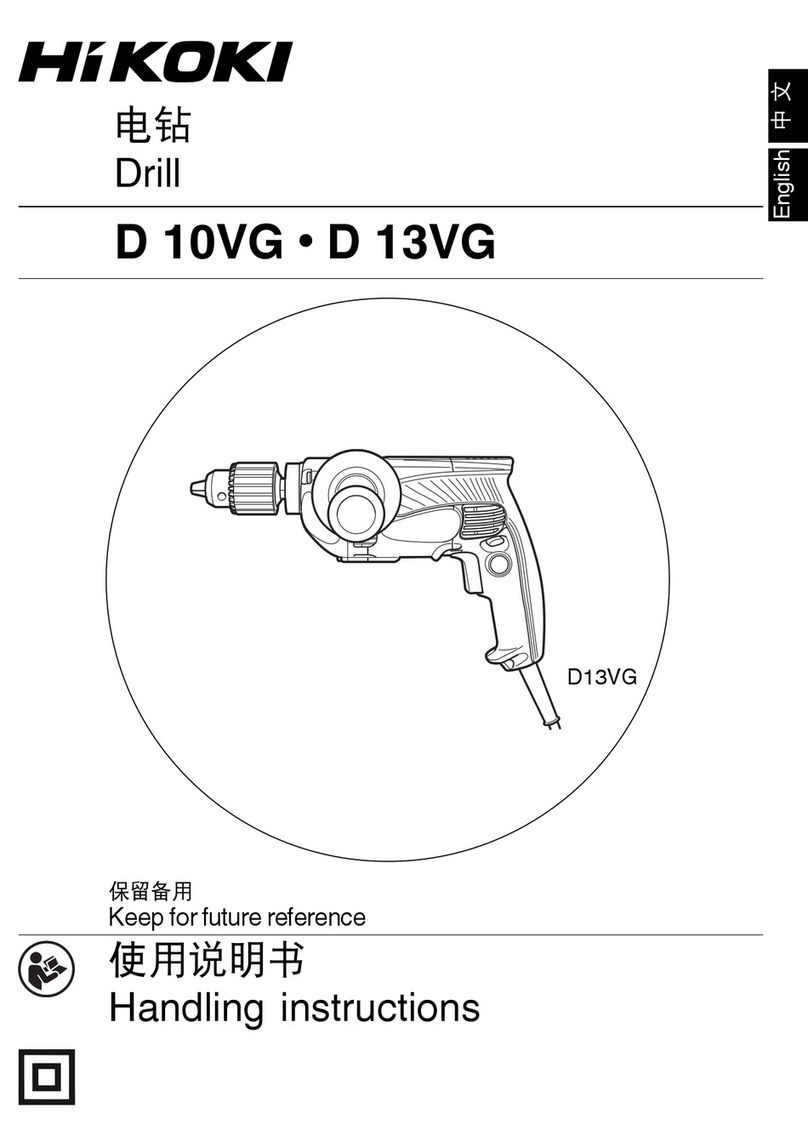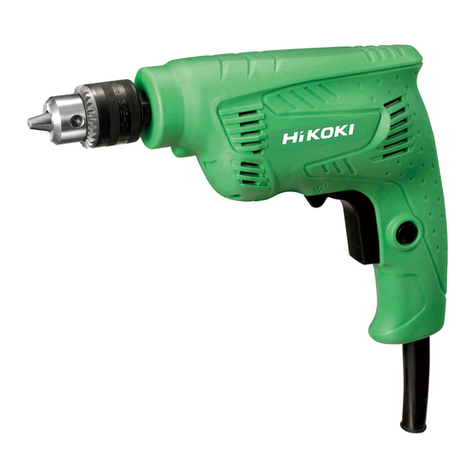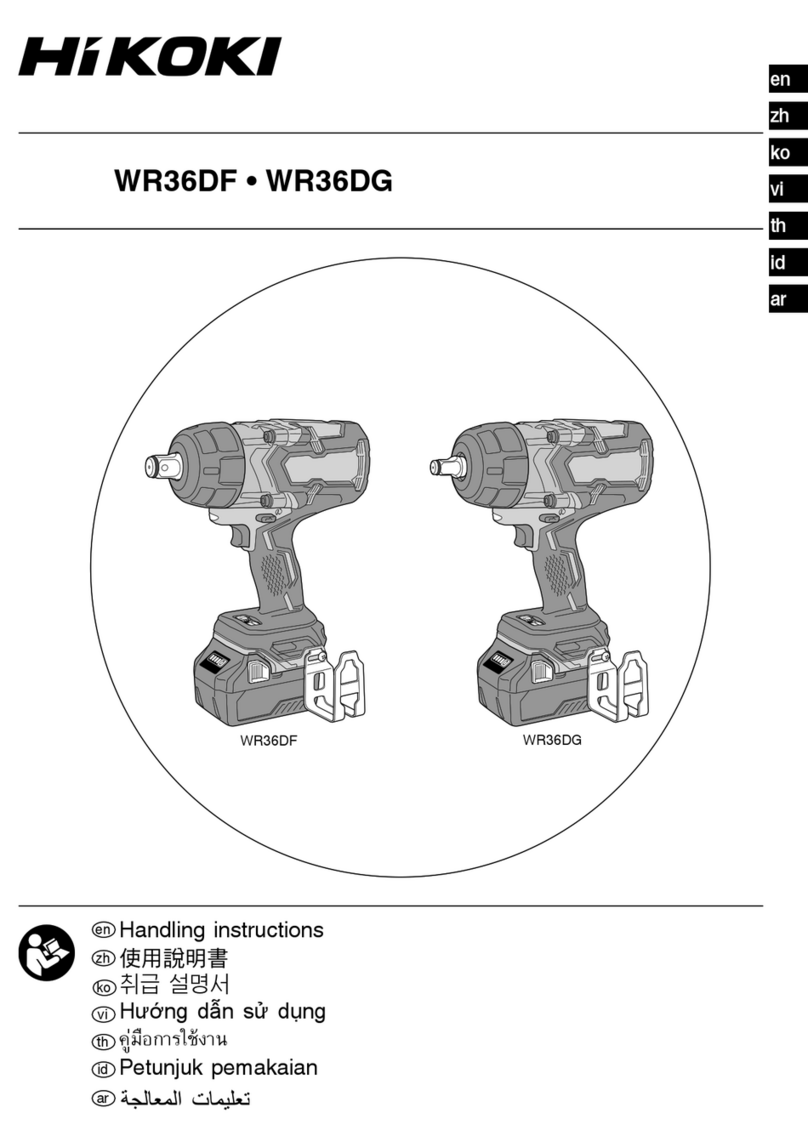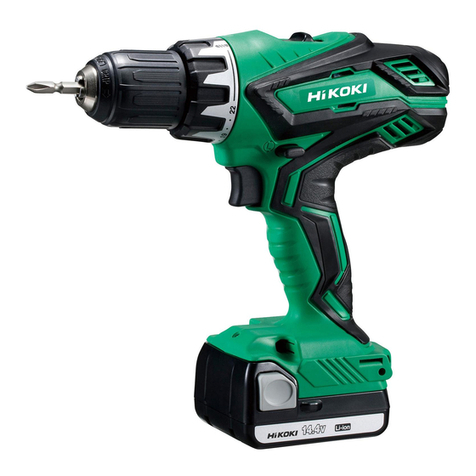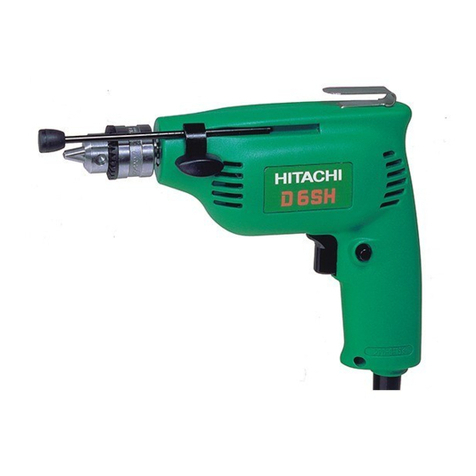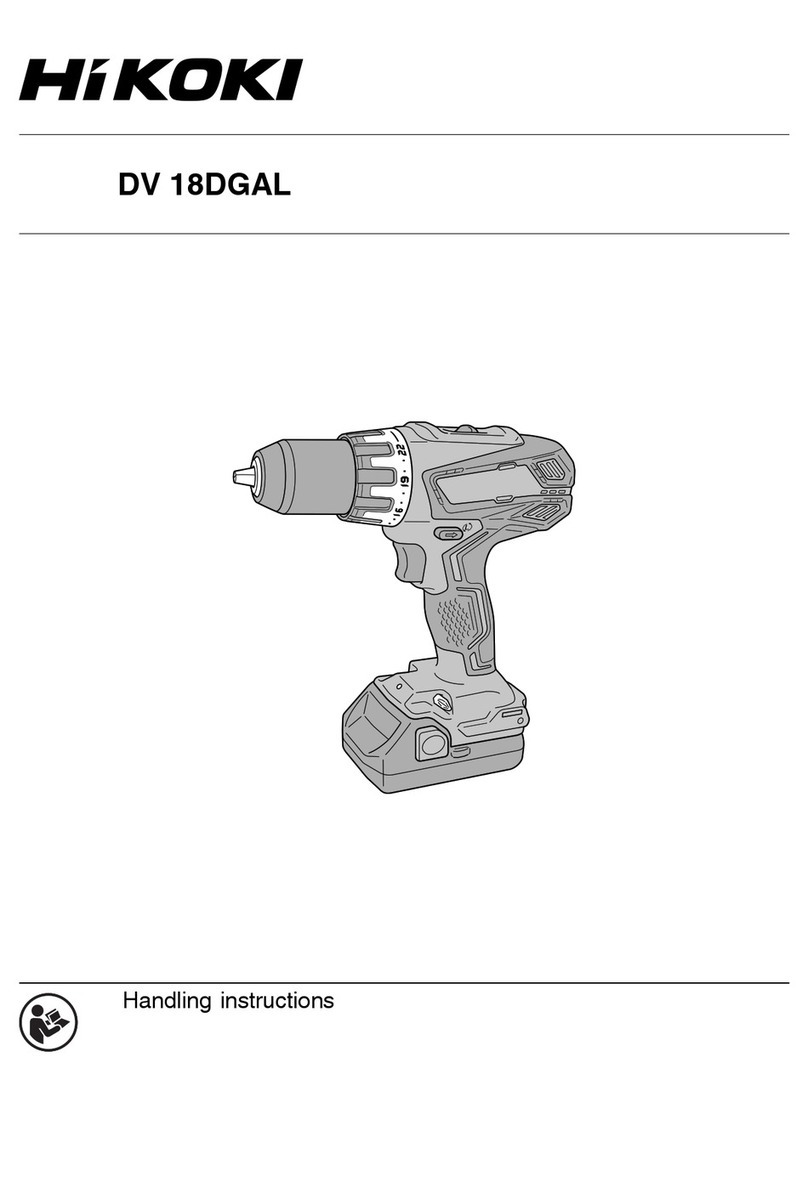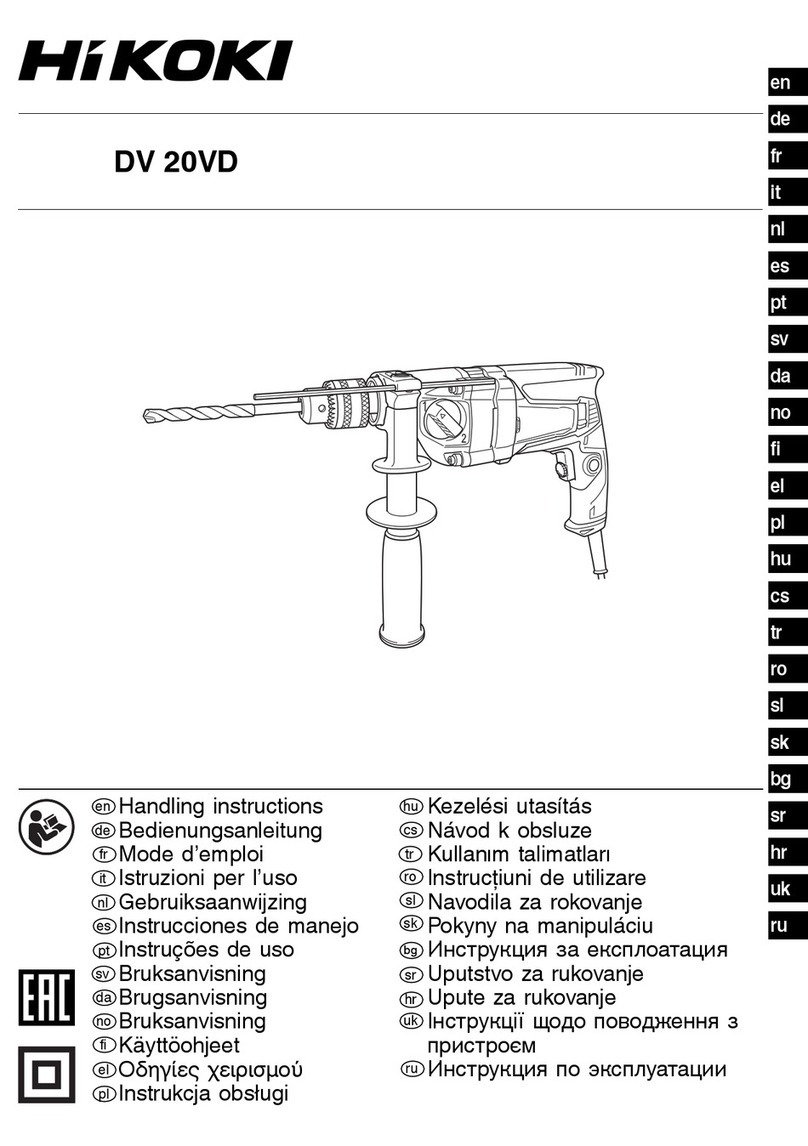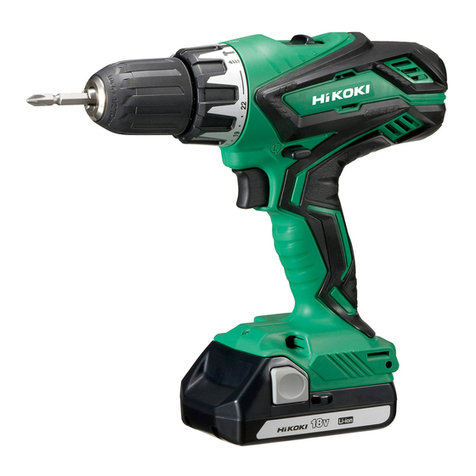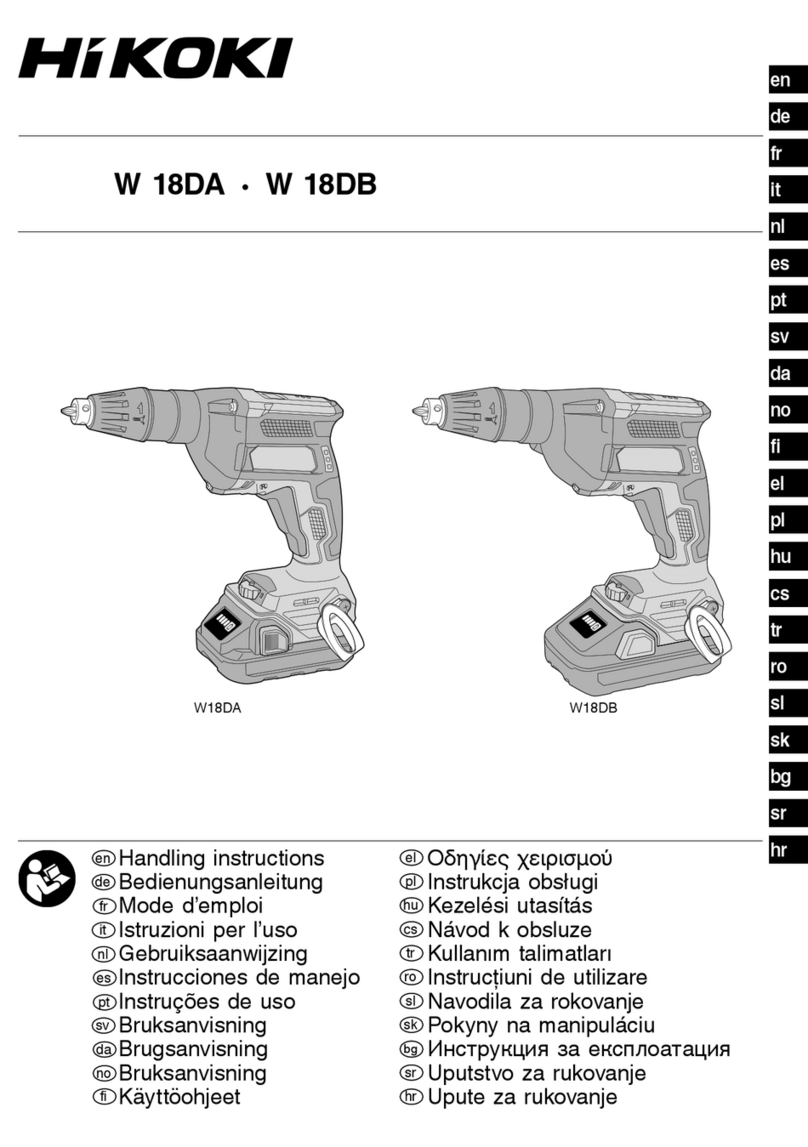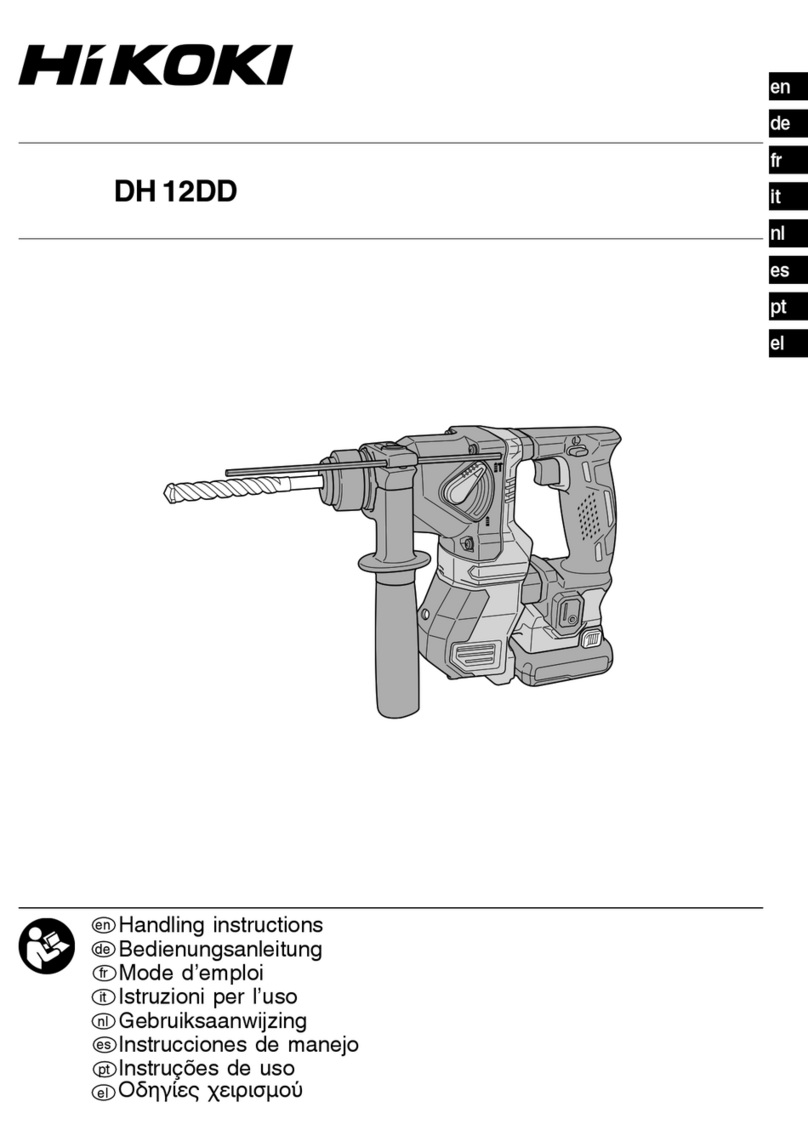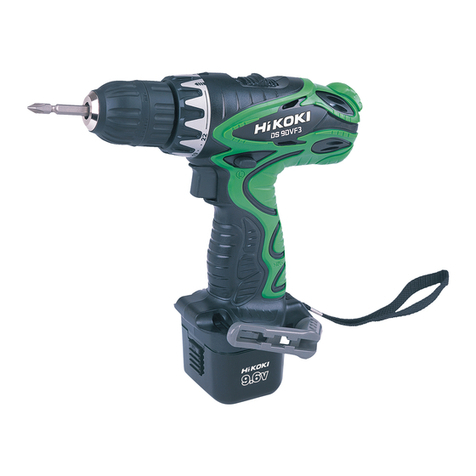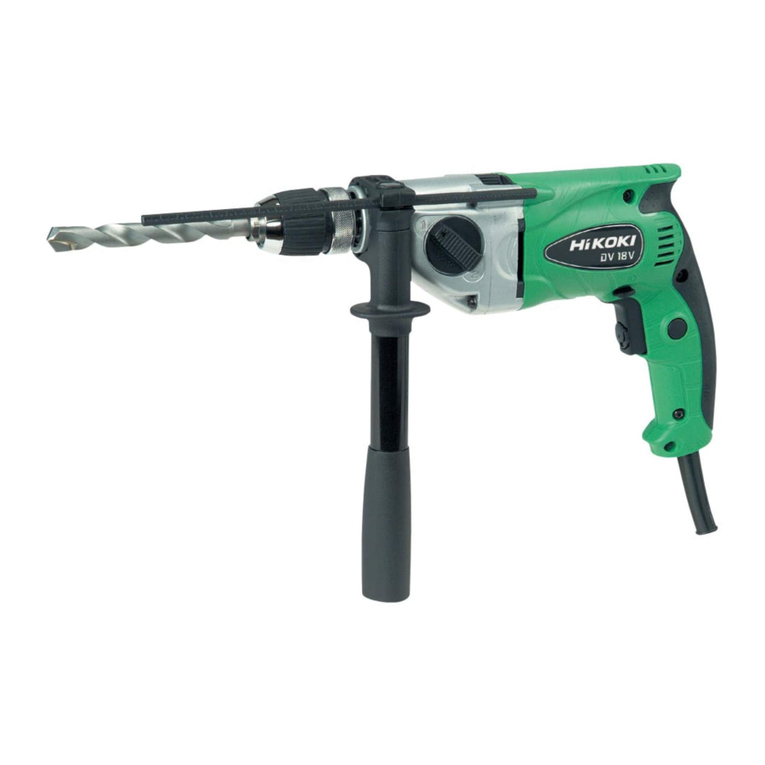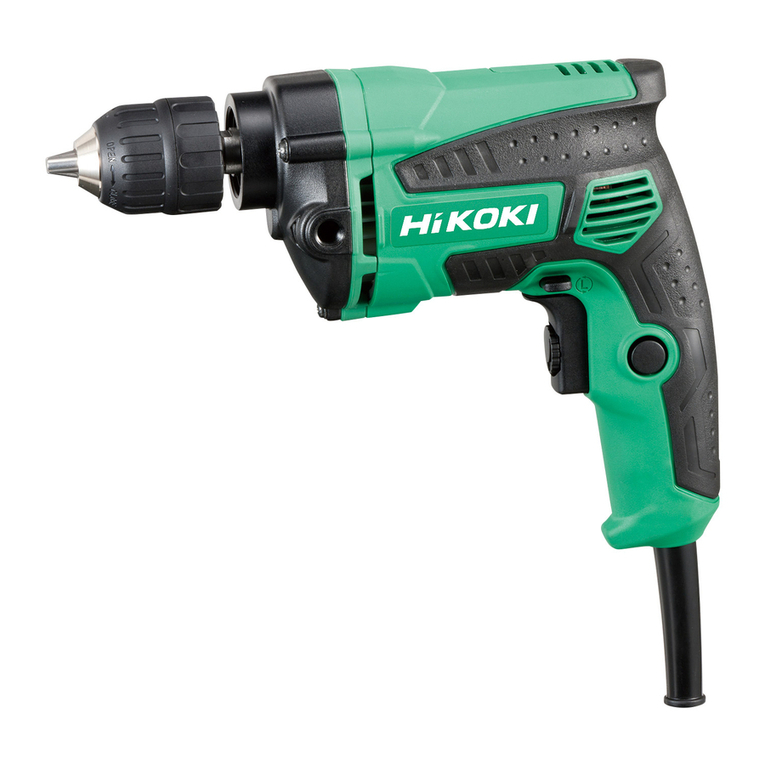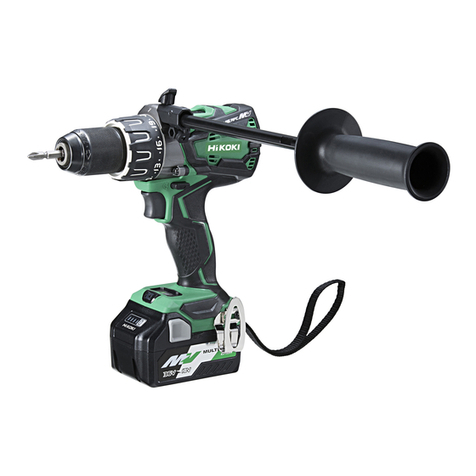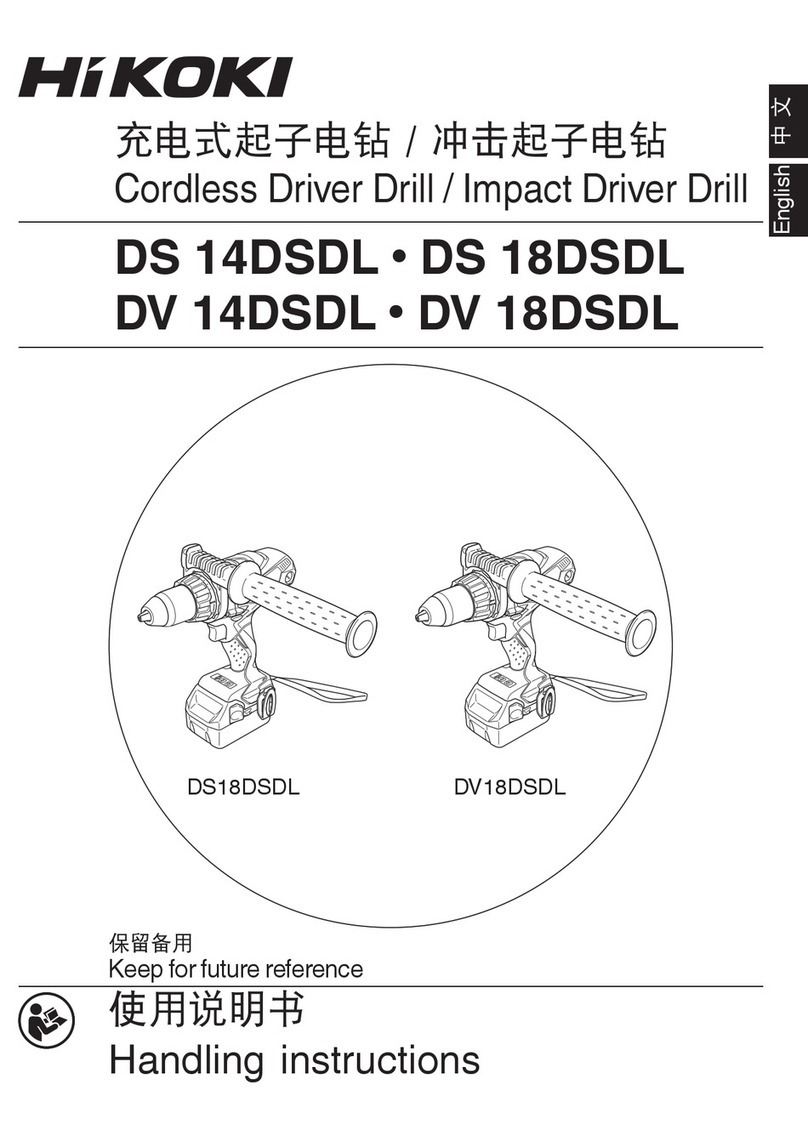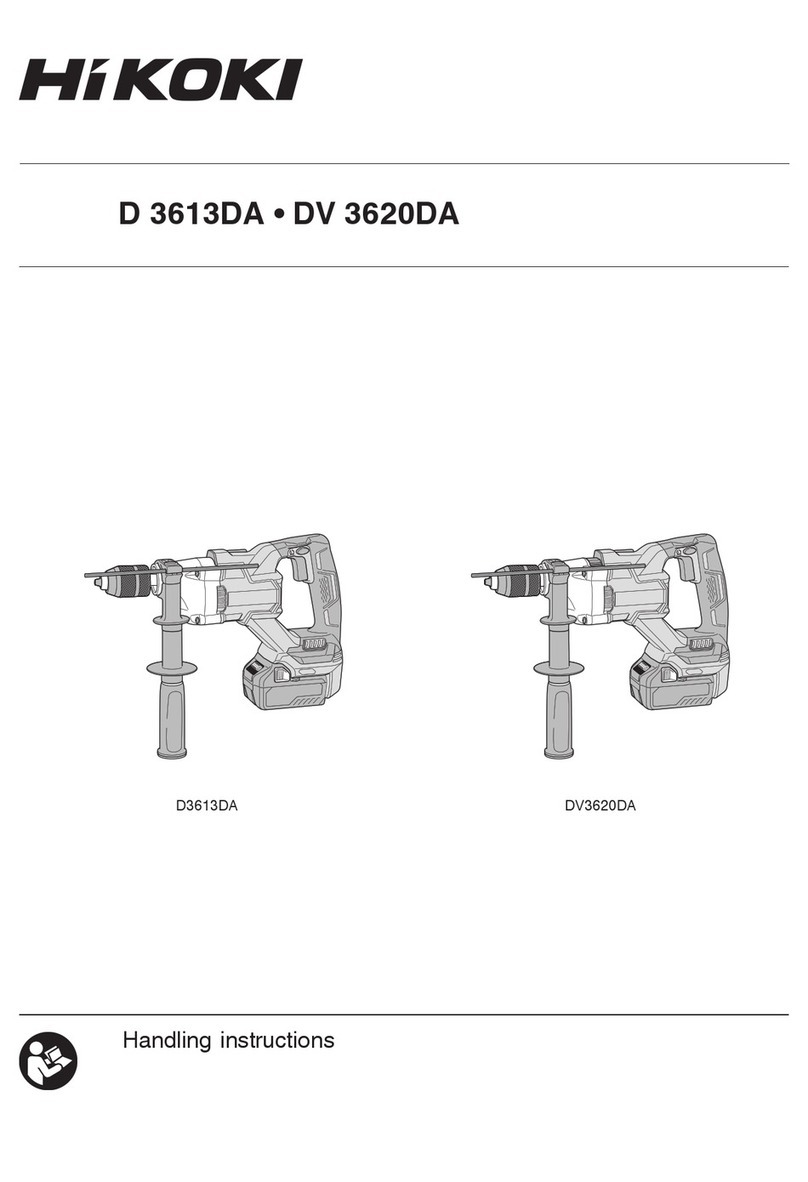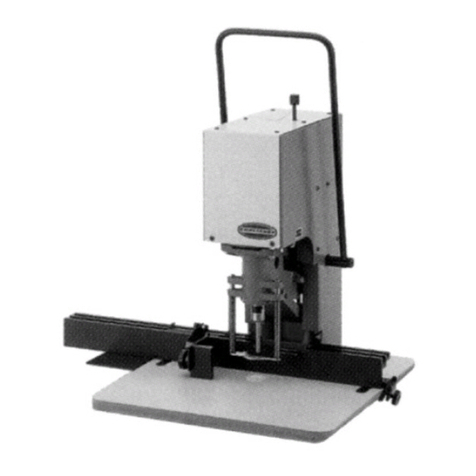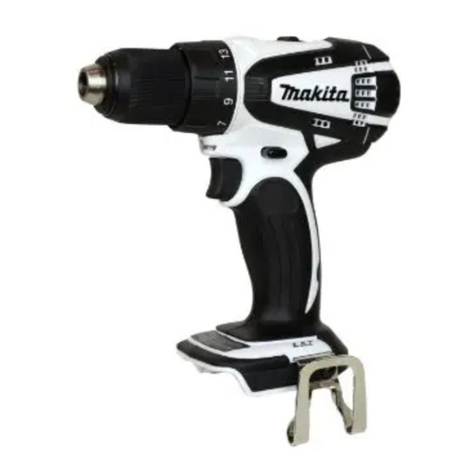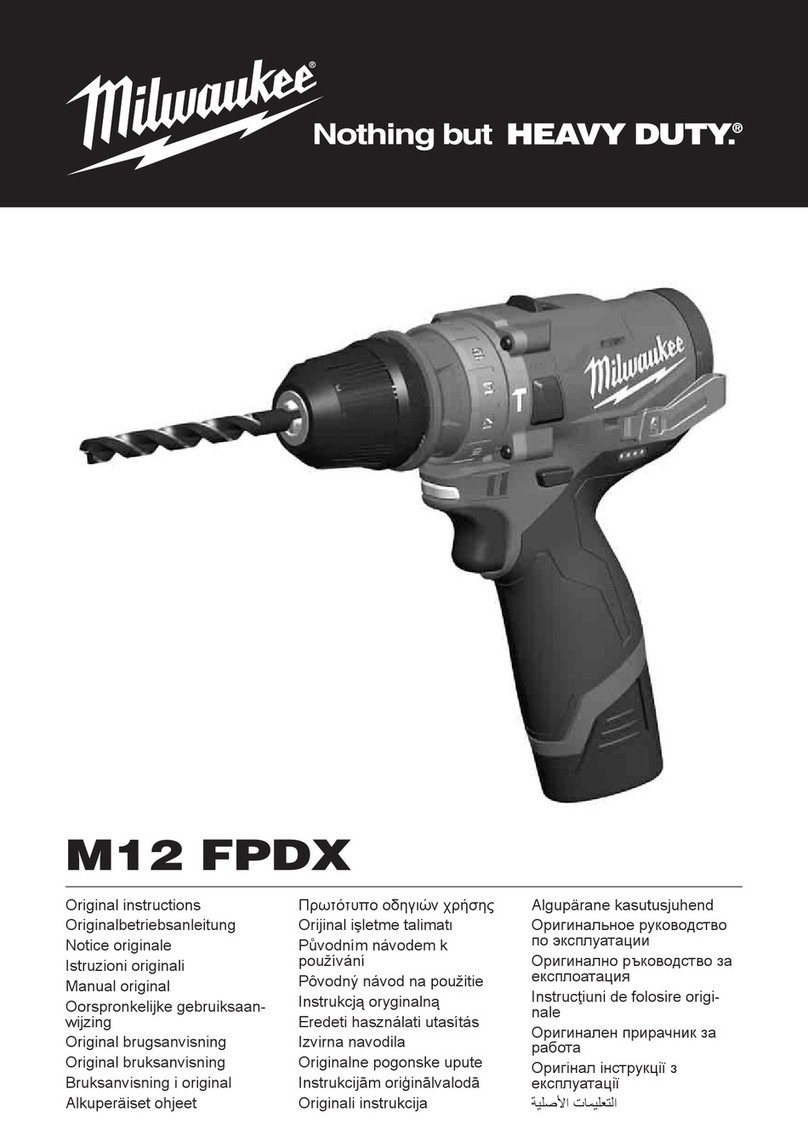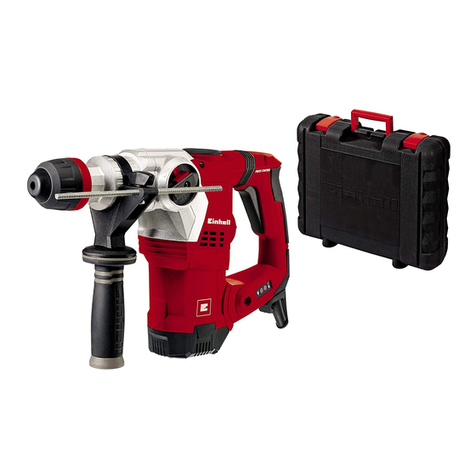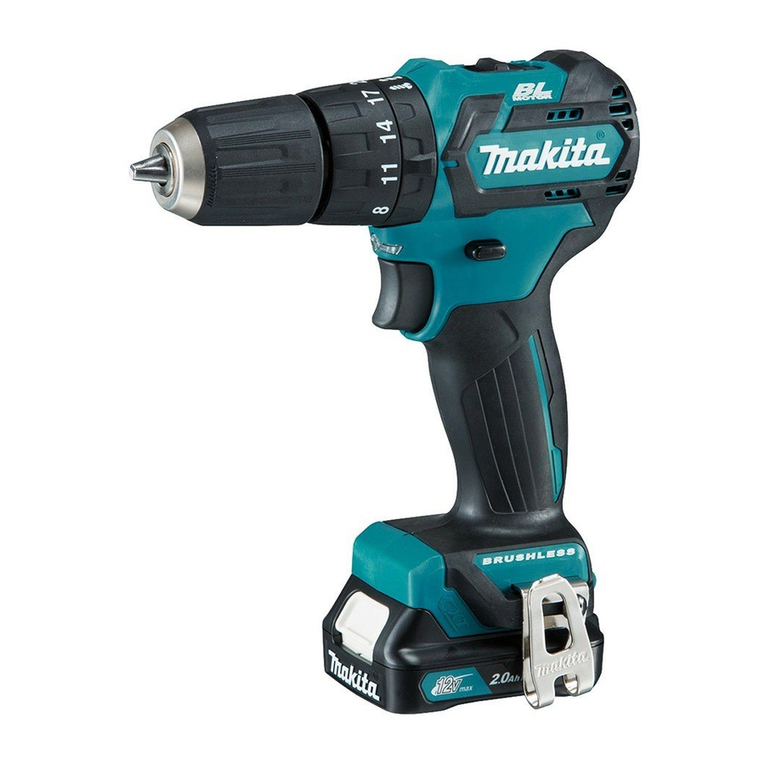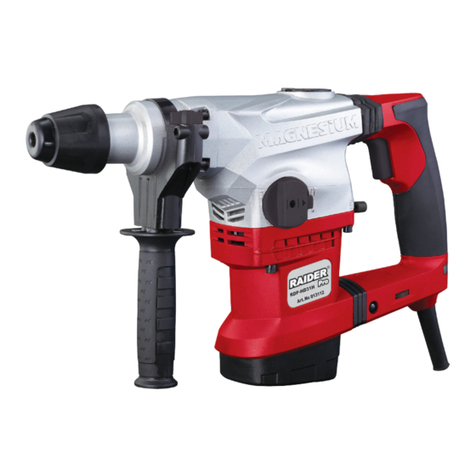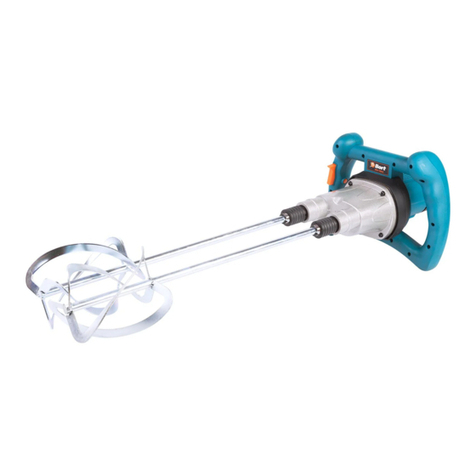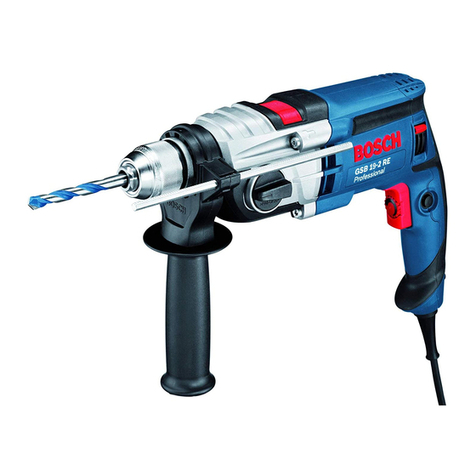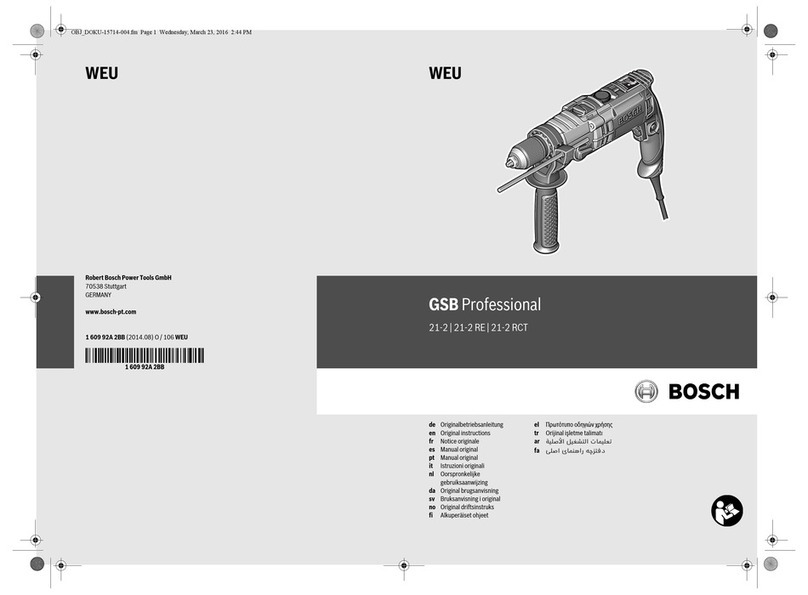
8
English
5) Battery tool use and care
a) Recharge only with the charger specified by the
manufacturer.
A charger that is suitable for one type of battery
pack may create a risk of fire when used with
another battery pack.
b) Use power tools only with specifically designated
battery packs.
Use of any other battery packs may create a risk
of injury and fire.
c) When battery pack is not in use, keep it away
from other metal objects like paper clips, coins,
keys, nails, screws, or other small metal objects
that can make a connection from one terminal
to another.
Shorting the battery terminals together may
cause burns or a fire.
d) Under abusive conditions, liquid may be ejected
from the battery; avoid contact. If contact
accidentally occurs, flush with water. If liquid
contacts eyes, additionally seek medical help.
Liquid ejected from the battery may cause
irritation or burns.
6) Service
a) Have your power tool serviced by a qualified repair
person using only identical replacement parts.
This will ensure that the safety of the power tool
is maintained.
PRECAUTION
Keep children and infirm persons away.
When not in use, tools should be stored out of reach of
children and infirm persons.
CORDLESS DRIVER DRILL SAFETY WARNINGS
1. Hold power tool by insulated gripping surfaces,
when performing an operation where the cutting
accessory or fastener may contact hidden wiring.
Cutting accessory or fasteners contacting a "live"
wire may make exposed metal parts of the power
tool "live" and could give the operator an electric
shock.
2. Always charge the battery at a temperature of 0
– 50°C. A temperature of less than 0°C will result
in over charging which is dangerous. The battery
cannot be charged at a temperature higher than
50°C.
The most suitable temperature for charging is that
of 20 – 25°C.
3. When one charging is completed, leave the charger
for about 15 minutes before the next charging of
battery.
Do not charge more than two batteries
consecutively.
4. Do not allow foreign matter to enter the hole for
connecting the rechargeable battery.
5. Never disassemble the rechargeable battery and
charger.
6. Never short-circuit the rechargeable battery. Short-
circuiting the battery will cause a great electric
current and overheat. It results in burn or damage
to the battery.
7. Do not dispose of the battery in fire.
If the battery is burnt, it may explode.
8. Bring the battery to the shop from which it was
purchased as soon as the post-charging battery
life becomes too short for practical use. Do not
dispose of the exhausted battery.
9. Using an exhausted battery will damage the
charger.
10. Do not insert object into the air ventilation slots
of the charger.
Inserting metal objects or inflammables into the
charger air ventilation slots will result in electrical
shock hazard or damaged charger.
11. When mounting a bit into the keyless chuck, tighten
the sleeve adequately. If the sleeve is not tight,
the bit may slip or fall out, causing injury.
CAUTION ON LITHIUM-ION BATTERY
This battery is exclusively for the driver drill. Never
use with any other heavy-duty power tools (i.e. Circular
saw, Reciprocating saw, Disc grinder and Blower etc.).
To extend the lifetime, the lithium-ion battery equips
with the protection function to stop the output.
In the cases of 1 to 3 described below, when using
this product, even if you are pulling the switch, the
motor may stop. This is not the trouble but the result
of protection function.
1. When the battery power remaining runs out, the
motor stops.
In such case, charge it up immediately.
2. If the tool is overloaded, the motor may stop. In
this case, release the switch of tool and eliminate
causes of overloading. After that, you can use it
again.
3. If the battery is overheated under overload work,
the battery power may stop.
In this case, stop using the battery and let the
battery cool. After that, you can use it again.
Furthermore, please heed the following warning and
caution.
WARNING
In order to prevent any battery leakage, heat generation,
smoke emission, explosion and ignition beforehand,
please be sure to heed the following precautions.
1. Do not pierce battery with a sharp object such
as a nail, strike with a hammer, step on, throw
or subject the battery to severe physical shock.
2. Do not use an apparently damaged or deformed
battery.
3. Do not use the battery in reverse polarity.
4. Do not connect directly to an electrical outlets or
car cigarette lighter sockets.
5. Do not use the battery for a purpose other than
those specified.
6. If the battery charging fails to complete even
when a specified recharging time has elapsed,
immediately stop further recharging.
7. Do not put or subject the battery to high
temperatures or high pressure such as into a
microwave oven, dryer, or high pressure container.
8. Keep away from fire immediately when leakage
or foul odor are detected.
9. Do not use in a location where strong static
electricity generates.
01Eng_DS14DFL_WE 10/16/12, 15:538
